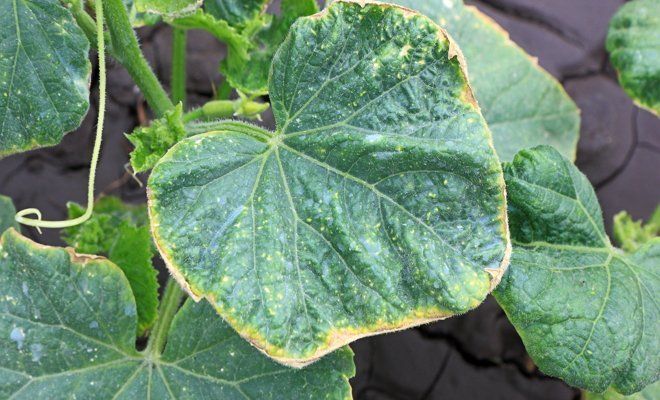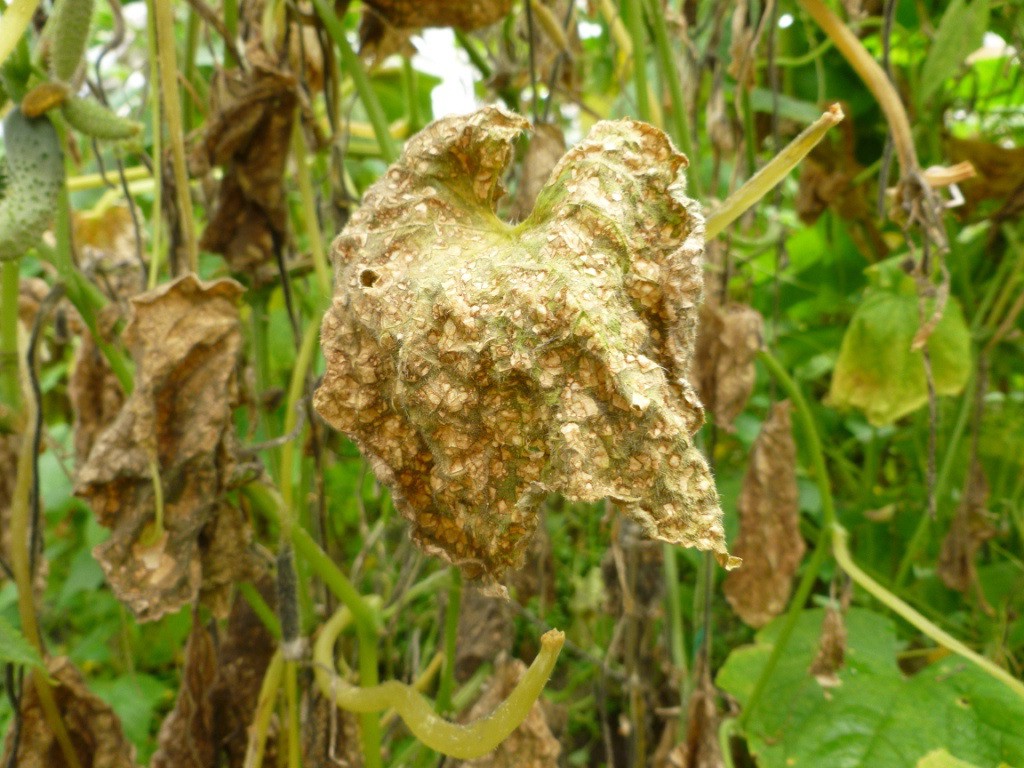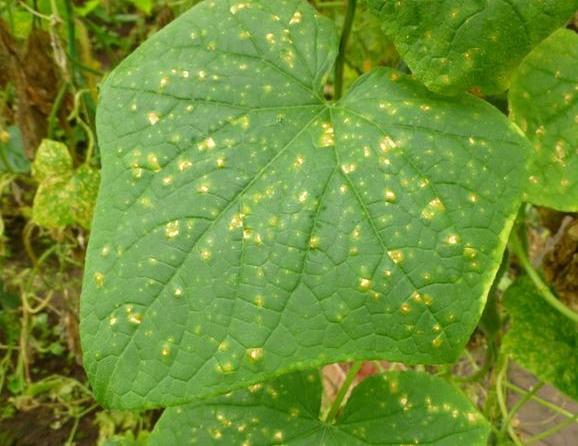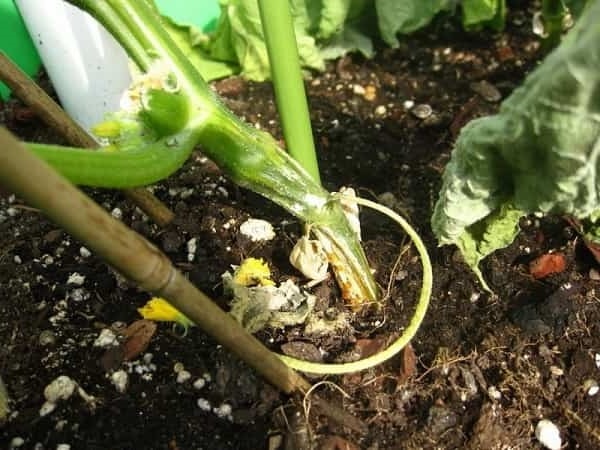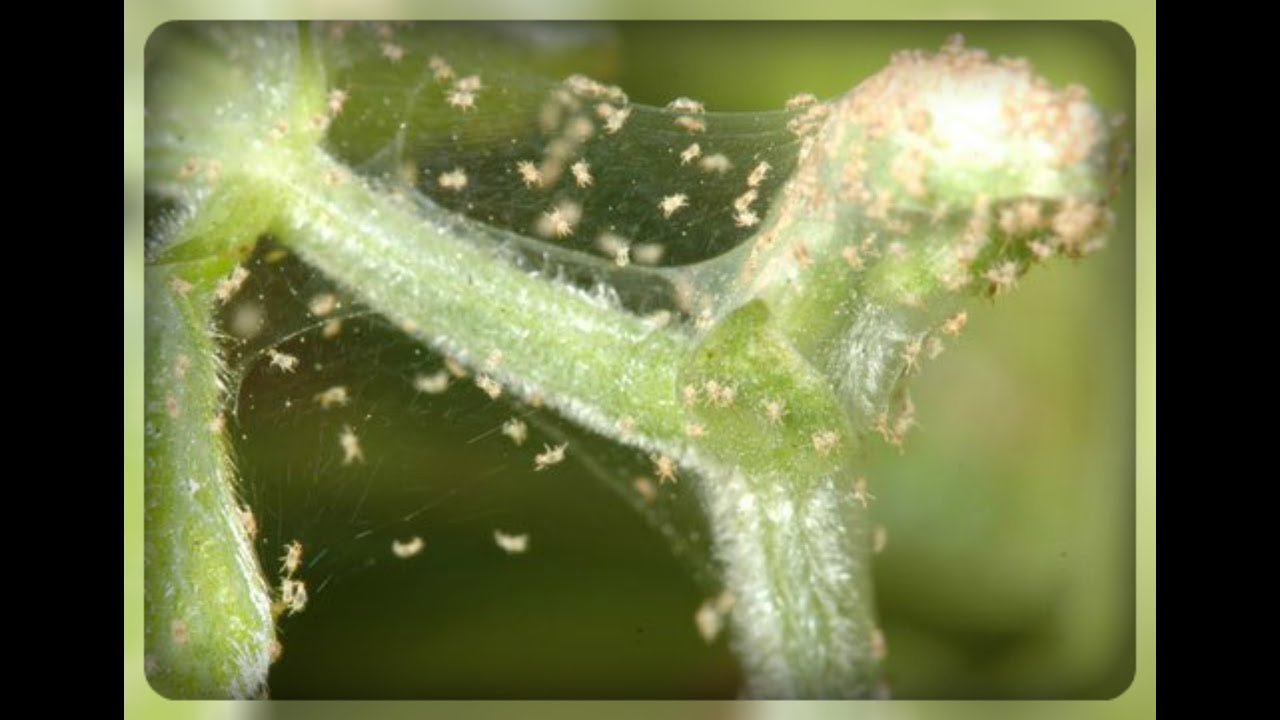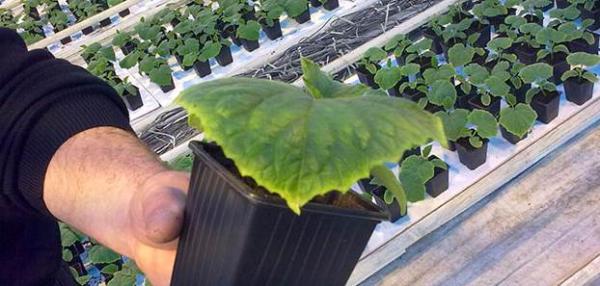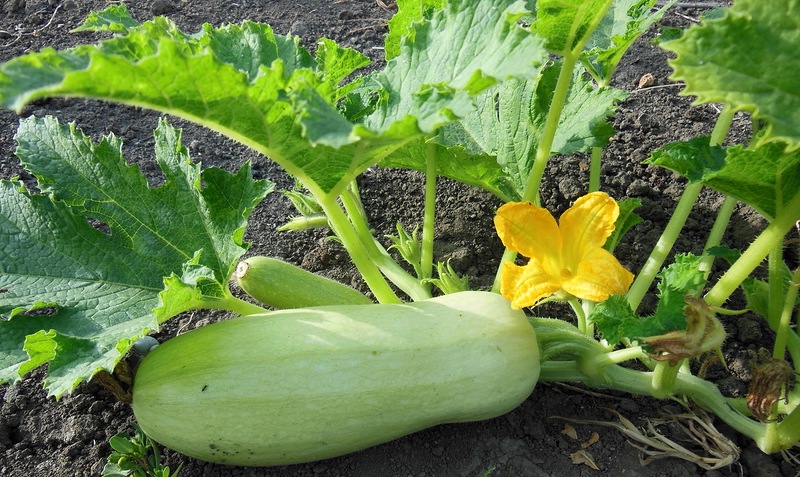Content:
There are a huge number of diseases in cucumbers. Moreover, plants growing in a greenhouse, they affect much more often, and the intensity of the lesions is much higher than in a street garden. So how do you prevent cucumber diseases? First of all, it is necessary to be able to distinguish between diseases at the earliest stage of their development.
Disease symptoms
By regularly examining the plantings, you can recognize the signs of the disease in time.
Powdery mildew
A white or yellow coating on the leaves of cucumbers, similar to flour, indicates a fungal disease called "powdery mildew". Time passes, and the amount of plaque only increases. Leaves begin to dry up and fall off, and new fruits stop setting, over time the cucumbers die.
Peronosporosis, or downy mildew
This disease is manifested by many small yellow spots on the leaves. After a few days, the spots increase in size, and the leaves become brown and dry. This disease is quite common and very dangerous, capable of destroying a culture at any stage of its development.
Cucumber Cladosporium (Olive Spot)
This disease affects not only the vines of plants, but also their fruits. The first symptoms are small dark spots on the leaves, stem and fruit of the cucumber. After 2-3 days, the spots become much larger and darker.
Sclerotinia (white rot)
The affected areas of the cucumber vine are covered with white fluff, which eventually changes its color to black. After all, the plant, including the fruits, is completely covered with a white bloom and begins to rot.
Gray rot
The disease affects absolutely all parts of the plant, including the formed ovaries, covering them with brown, watery spots with a gray coating. The disease is bacterial in nature.
Root rot of cucumbers
This disease can be determined by the condition of the cucumber leaves. As soon as the plant gets sick, the leaves begin to wilt and dry out. And the color of the cucumbers becomes almost red.
Medyanka
When infected, the vines of cucumbers are covered with a huge number of brown spots and gradually dry out. And the cucumbers themselves cover wet sores. The second name of the disease is anthracnose.
Diseases of cucumbers and the fight against them
There are several types of cucumber diseases:
- fungal;
- bacterial;
- viral.
Fungal
At any stage of development, the cucumber crop can be affected by various fungal diseases. Some of the most common diseases are powdery mildew and downy mildew.
These diseases occur as a result of the massive spread of the mycelium fungus. The appearance of spores of this fungus in a personal plot can be caused by many factors, including:
- use of low-quality seeds;
- transfer of fungus from neighboring gardens;
- poor processing of the greenhouse before planting cucumbers.
The rapid spread of microorganisms is facilitated by favorable weather conditions for them, the lack of nutrients in the soil, and improper agricultural practices.
Powdery mildew: how to fight
The main factors in the spread of the disease are an overabundance of nitrogen compounds in the soil, a lack of potassium, sudden changes in air temperature and dew loss. Usually, this disease predominates in the spring-summer period, when daytime temperatures are much higher than nighttime.
There are several ways to deal with this disease.
Folk. Such methods will help in any situation that arises, and at the same time do not require special material costs. To get rid of powdery mildew, you need to take 1 teaspoon of soda ash, 1 teaspoon of liquid laundry soap and mix in one liter of warm water. The prepared solution is sprayed onto the plant with a spray bottle. Processing should be carried out at least once a week.
The second popular way to treat this disease is to separate the whey from sour milk and combine it with warm water in a ratio of 1:10. Spray the affected cucumber bushes with the resulting solution.
If traditional methods have not had the desired therapeutic effect on plants, you will have to use fungicides for cucumbers. In specialized stores, you can find a lot of chemicals that can cure cucumbers.
Biofungicides. These are products made on the basis of special bacteria that eat powdery mildew spores, thereby saving the plant from disease.
Disease prevention:
- during the autumn cleaning of the site, all plant residues must be removed from it, since pathogens live in them.
- timely apply fertilizers containing potassium and phosphorus.
- water the plants only at the root.
Downy mildew
Basically, the manifestations of downy mildew can be noticed at the end of summer, and the disease spreads to all plants growing in the garden. Therefore, if treatment is not started on time, all plants, including flower crops, can get sick.
Usually the spores of this disease are carried by insect pests, it is because of this that any culture in the garden can get sick. Poorly processed seed is another source of infection.
As soon as the cucumbers fell ill and the first symptoms of peronosporosis appeared on them, the plants should be carefully examined and urgent treatment should be started. To combat this fungus, you can use folk remedies, for example: mix 10 liters of warm water, 9 drops of iodine and one liter of skim milk. Spray the plants with the resulting solution.
In addition to folk remedies, you can equally effectively use chemicals for cucumber diseases, for example, treat bushes with a 1% solution of Bordeaux mixture.
To prevent the disease, the following preventive work must be done:
- Two weeks after planting the seedlings, it must be sprayed with Bordeaux liquid or copper sulfate solution.
- Correct and timely feeding of plants with organic fertilizers, as well as soil mulching.
- The air humidity in the greenhouse should not exceed 80%, and the air temperature should be above 21 ° C.
Olive spot
Cladiosporosis is one of the most dangerous diseases affecting cucumbers. The result of the disease is a decrease in yield and the appearance of non-standard fruits.
Why does olive spot spread on cucumbers:
- due to watering cucumbers from above;
- high air humidity;
- lowering day and night air temperatures;
- drafts.
All of the above factors significantly weaken the culture, as a result of which the disease manifests itself.
The causative agents of cladiosporosis winter well in poorly disinfected greenhouses, therefore, the processing of greenhouse premises should be carried out in autumn and spring.
How to deal with cucumber olive spot:
- do not water the plant for several days;
- when it is warm to ventilate greenhouses and hotbeds, opening wide all windows and doors;
- when it's cold, on the contrary, close everything and try to maintain the temperature in the greenhouse at least 20 ° C.
- as soon as the first signs of the disease appeared, the plant urgently needs to be treated with a 1% solution of Bordeaux liquid.
Plants should be treated only with a sprayer, and in no case should a watering can or a broom be used. After processing, the cucumbers are carefully dried.
Bacterial diseases of cucumbers and methods of dealing with them
Bacteriosis is a very dangerous disease that affects cucumber crops. There is a risk of losing almost 70% of the total crop. The disease is very difficult and difficult to deal with. This is usually done by resorting to complex therapy: treatment with fungicides and insecticides.
Root rot in cucumbers: how to fight
Most of the root rot of cucumbers leads to a complete loss of cucumber yield.
As a rule, the disease affects only weakened plants. The provocateurs of the disease are high humidity and low air temperature.
The causes of the disease can also be:
- incorrect crop rotation;
- insufficient processing of greenhouses in autumn and spring;
- purchase of contaminated seed and sowing it on the beds and in the greenhouse;
- contaminated soil;
- excessive watering of plants;
- sudden changes in daily temperatures;
- poor ventilation of the greenhouse.
As soon as the first signs of the disease appear on the cucumbers, it is necessary to stop watering them. Otherwise, the cucumbers will simply die.
When fighting root rot, you can use the following method: crush chalk, coal or ash into powder and fill it with rotten places. This action will dry out and stop decay.
Chemicals are also used, such as Previkur. 20 g of this drug should be diluted in one bucket of water and pour cucumbers under the root.
Biological preparations are less dangerous for humans. One of these drugs is Alirin-B. It is released in the form of tablets.
Viral diseases of cucumbers
Viral diseases affecting cucumbers include white and yellow mosaics. It should be noted that viral diseases are practically not amenable to treatment. Therefore, at the first symptoms of the disease, the plants must be destroyed. In no case should the fruits of infected plants be eaten or fed to pets.
Why do cucumber seedlings wither and die in cups? The main reasons for the death of cucumber seedlings are improper care and planting, as well as insect pests and various diseases. Examining seedlings and adult plants, you can notice pathology in time and take measures to save the harvest.
